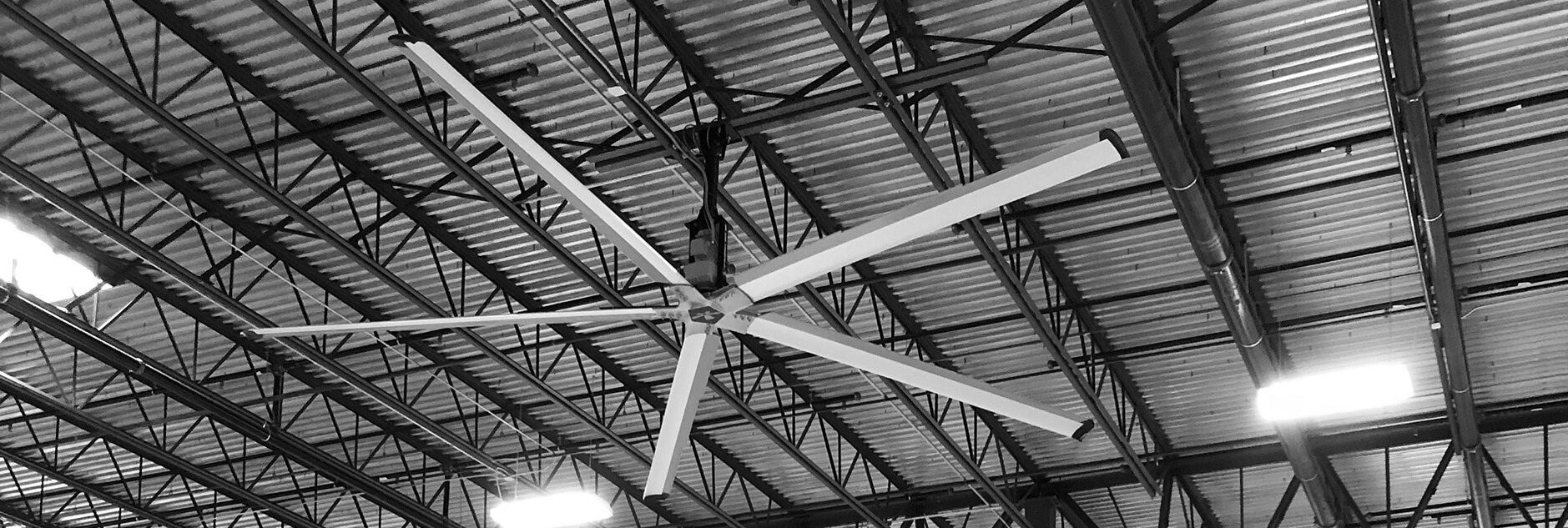How do HVLS Fans Really Work?


HVLS fans are becoming more and more popular as a cost-effective cooling and/or heating solution for warehouses, agricultural buildings, airplane hangars, theaters, and other large commercial and industrial spaces. Many people are curious to know exactly how they can make such big spaces so comfortable — while also helping the bottom line, no less.
The short answer? Evaporative cooling. This cooling effect generates numerous benefits in addition to keeping everyone oh, so comfortable.
If you measure the temperature in a room with and without an active fan, you will find no difference — and yet you will enjoy a number of “cool” improvements that everyone from your employees to your accountant will notice. Here are some of the plusses that you will experience using HVLS fans:
- Energy savings: Move a lot of air without using a lot of power.
- Improved productivity: Comfortable workers are productive workers.
- Better indoor air quality: Reduce opportunities for
mold, dust and dangerous fumes to take hold. - Safer conditions: If your floor is a concrete slab, you know how dangerous and slippery moisture buildup can be. HVLS fans promote evaporation.
Why HVLS Fans Make You Feel Cooler (or Warmer)
A working HVLS fan exerts a powerful influence on both air velocity and humidity, two factors that influence thermal comfort. No fan, whether it’s an HVLS fan or a conventional high-speed fan, actually changes the temperature of the air.
The primary way HVLS fans work is by creating a breeze that results in an evaporative cooling effect. As the air moves across a person’s skin, it causes small amounts of moisture to evaporate. As the moisture changes from liquid to gaseous form, the resulting phase change absorbs heat, and the person will feel cooler. In fact, the room can feel up to 7 degrees colder without lowering the thermostat — which can help you save significantly on cooling bills.
This evaporative effect also works to remove humidity from the air. Since humid air makes warm air feel hotter and cold air cooler, less humidity definitely helps make things more comfortable.
Finally, in wintertime the air in a large building often stratifies into layers. As the HVAC system pumps warm air into a room, it tends to rise and collect at the ceiling, leaving people at ground level cold. An HVLS fan gently mixes the layers of air to maintain a comfortable temperature without raising the heat.
Even though HVLS fans don’t directly heat or cool the air, they can make a space feel a LOT more comfortable for a fraction of the expense of pumping up the HVAC.
Looking to Improve Thermal Comfort in Your Facility?
Check out VividAir’s HVLS fan products for for cost-effective solutions to your heating and cooling needs!
